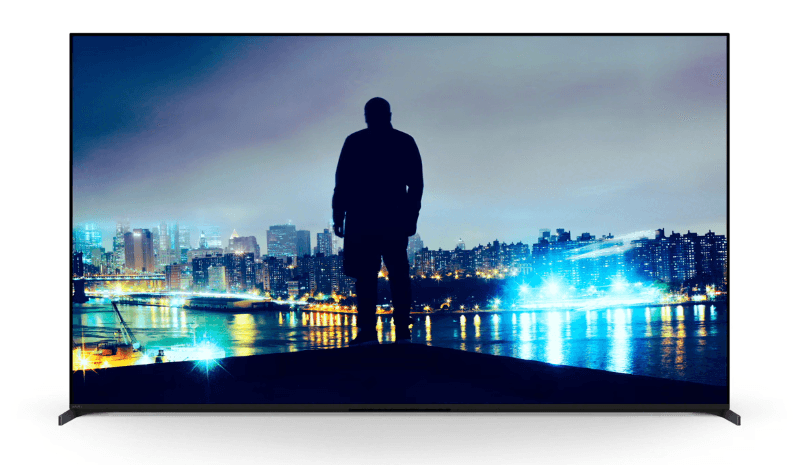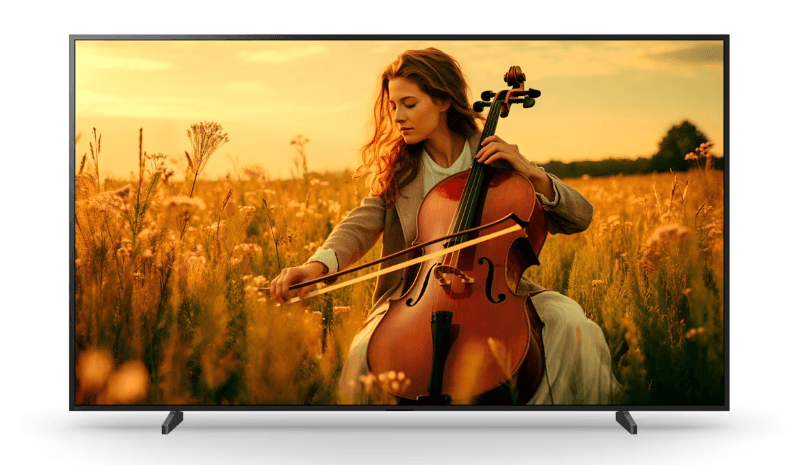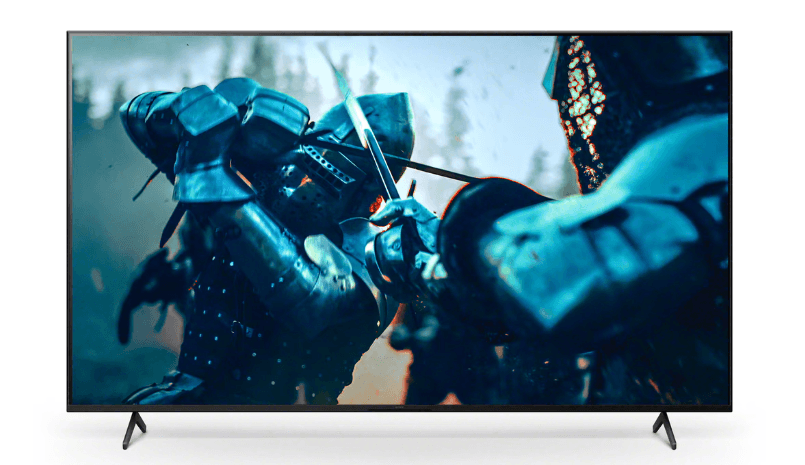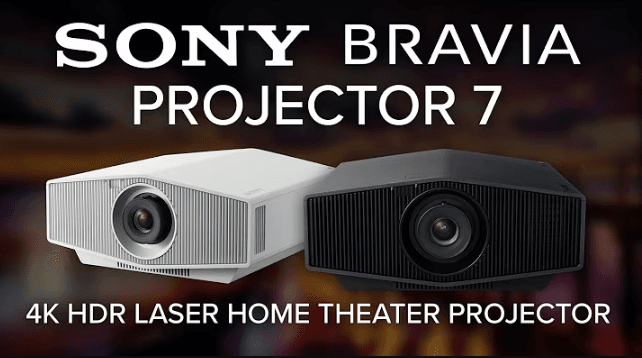
Sony has finally unveiled its new Bravia TVs for 2025, and there are three new models to look forward to, including its first new OLED model in two years.
Of the trio of new Sony TVs, the most prestigious is the success to the company’s highly-rated A95L QD-OLED TV, which was first released in late 2023 and has been its flagship OLED model ever since then.
The new model is not called the Bravia 10, as many had assumed, but rather has the clunky Bravia 8 Mk. II moniker. It’s a step up from the A95L nevertheless, and Sony says it will be more affordable than the model it replaces, though it hasn’t announced any price tag yet.
In addition, there’s a new Bravia 5 Mini-LED aimed at the midrange segment, as well as the Bravia 3, which is more of an entry-level option with a fairly standard LED display.
HDTVTest's Vincent Teoh was among a number of journalists invited to see Sony's new TVs up close, and you can see his first impressions here:
It should be pointed out that none of these models replace anything from last year. Unlike Samsung Electronics, LG Electronics and Panasonic et al, Sony’s TVs are released on a two-year cadence, with the company alternating between flagship Mini-LED and flagship OLED models every year. As such, they expand the company’s existing lineup, which includes last year’s Bravia 9 Mini-LED TV that will continue to be sold throughout 2025.
Sony will launch its next flagship Mini-LED TV in 2026, and that model will feature the company’s fancy new RGB LED backlighting technology. Announced last month, the enhanced high-density LED backlight features a new control system that allows each of the LED pixels to be controlled independently, enabling “higher colour purity” and a “vibrant wide colour gamut”, but we’ll have to wait until next year to see it.

In the meantime, we’ll have to make do with Sony’s new flagship OLED TV instead, and it promises to be quite a beauty, with Samsung Display’s latest-generation QD-OLED panel enabling much higher brightness than the A95L model. It also comes with a new chipset, the Sony XR Processor that powers an improved AI scene recognition system to analyse and optimise content in real-time so it can tinker with the colours, contrast and detail based on what’s being shown on screen, improving the overall realism of its pictures.
As for the new QD-OLED panel, we first saw this at CES when Samsung announced its new S95F OLED TV. Sony said the display, paired with its proprietary XR Triluminous Max and XR Contrast Booster 25 technology, will enable deeper blacks and wider colour reproduction compared to the A95L TV. It also delivers a modest improvement in brightness, boosted by an enhanced heat-management and high-luminance system, providing what Sony says will be an altogether punchier HDR performance.
As for the sound, this is handled by Sony’s Acoustic Surface Audio+ technology, which transforms the screen into a centre speaker, positioning the sound from where it’s happening on-screen. This system first appeared in the Sony Bravia 8 TV that debuted last year, featuring a WOLED panel from LG Display. By all accounts it works very well, though a dedicated soundbar would almost certainly provide much beefier sound.
There’s also a new Voice Zoom 3 feature that helps to enhance dialogue clarity, and the sound system will be compatible with Dolby Atmos and – crucially – the DTS:X audio format that HDTVTest recently confirmed will be absent on this year’s 2025 LG OLED TVs.
Sony added that the Bravia 8 II features a 4K 120Hz panel with HDMI 2.1 ports, Auto Low-Latency Mode and Variable Refresh Rates, which ticks all of the boxes for games consoles. It will be available in two sizes – 55-inches and 65-inches – when it goes on sale later in the year.

The new Sony Bravia 5 model is intended to sit between the company’s flagship Bravia 9 Mini-LED TV and its lower-end LED models, offering many of the same advanced features found on the more premium model.
Picture quality is the main focus, and Sony cited its XR Backlight Master Drive technology which controls a dense array of miniature LEDs to enable precise local dimming, resulting in much superior contrast and colour accuracy than any regular LED TV. It also features the new XR Processor, as well as XR Triluminos Pro, XR Motion Clarity, and XR Contrast Booster 10 to help optimise the on-screen pictures and take advantage of that highly-efficient Mini-LED panel.
The Bravia 5’s sound is controlled by the Acoustic Multi-Audio system, which is a step-down from the Acoustic Surface Audio+ found on the Bravia 8 II, but it still supports Dolby Atmos, DTS:X and IMAX Enhanced.
Like the Bravia 8 II, the Bravia 5 should be a good option for gamers, with its HDMI 2.01 ports, 4K/120HZ panel and VRR support, plus a dedicated Game Menu and PS Remote Play compatibility, which lets users stream PS5 and PS4 games to the TV without a physical connection.
If you’re after a super-large sized TV, the Bravia 5 may be the model you want, as Sony is offering a range of options from 55-inches to 98-inches at the max. We don’t yet know the pricing, nor any release dates.

If you’re in the market for a lower-end model, the Sony Bravia 3 is the one for you, at least if you’re a fan of the Sony brand. Based on the specifications, it’s clearly an entry-level model with its standard direct-lit LED panel and its older 4K Processor X1 and Triluminos Pro tech. That said, it should still be capable of delivering some fairly respectable pictures, and there’s reason to think Sony’s expertise could help put it a cut above entry-level models from less famous brands.
The sound quality should still be good, with both Dolby Atmos and DTS:X supported. Like the above Bravia models, the Bravia 3 will run the Google TV operating system and support PS Remote Play.
Sony said sizes will range from 43-inches (ideal for bedrooms) all the way up to 85-inches.

Surprisingly, Sony also unveiled a fourth option for viewing content in the shape of the new Bravia Projector 7, which can be considered an entry-level home theatre model, sitting below the existing Bravia Projector 9 and Bravia Projector 8 models that launched last year.
Still, it’s a 4K projector and it’s pretty powerful, delivering 2,200 lumens of brightness from a compact, 12.7 kilogram box. It comes with a specialised XR Processor that’s optimised for projectors, and it features Sony’s XR Deep Black technology for enhanced contrast control. It should be good for gaming too, with two HDMI 2.1 ports that support 4K/120Hz gaming with ALLM.
Sony also highlighted the Bravia 7 Projector’s Aspect Ratio Scaling Mode feature, which lets users switch between 2.35:1 and 16:9 aspect ratios without requiring any lens adjustment, simply by tapping a button on the remote.